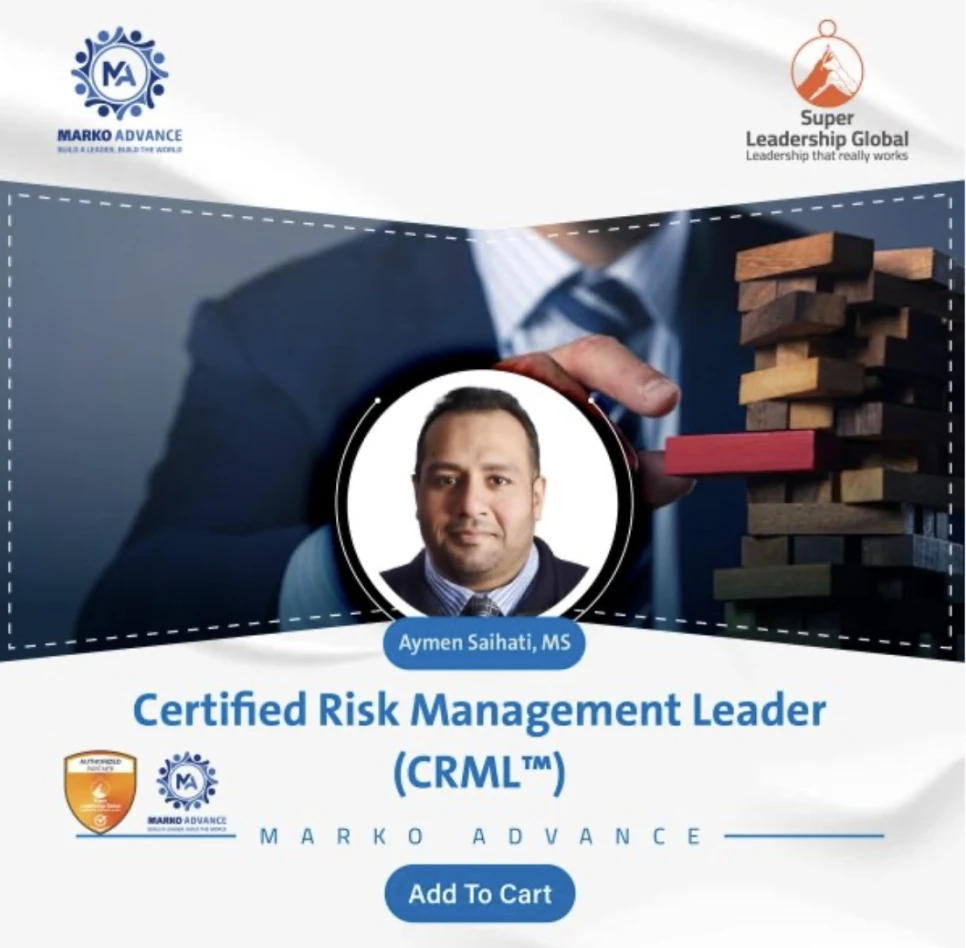
Certified Risk Management Leader™ (CRML™)
Posted on 12th June 2025Duration
(5-Day)Categories
BusinessSub Categories
ManagementProgram Objectives
- Empower leaders to identify, assess, and mitigate risks in a complex and volatile environment.
- Combine theoretical foundations with practical applications.
- Equip participants with tools and frameworks to turn threats into strategic opportunities.
- Enhance leadership capacity to foster a culture of resilience and informed decision-making.
- Support professionals entering leadership or mentoring roles in risk management.
Program Value Proposition
- Emphasizes the role of self-awareness in effective risk leadership.
- Addresses how internal biases, thoughts, and emotions impact decisions during uncertainty.
- Helps shift from reactive, fear-based responses to proactive, confident decision-making.
- Enables participants to anticipate and manage emerging risks under pressure.
Target Audience
- This program is suitable for professionals at different stages, including:
- Top management
- Middle management
- Risk management professionals
- Governance, Risk, and Compliance (GRC) officers
- Crisis management leaders
- Business and service continuity professionals
- Aspiring leaders in risk management
What You Will Learn During the Program
- Risk Management vs. Risk Leadership
- Distinguish between managing risk and leading through uncertainty.
Pillars of Risk Leadership 2
- Identify leadership traits essential for risk-informed decisions.
Evolving Risk Landscape and Adaptive Leadership 3
- Understand global risk shifts and lead effectively in dynamic contexts.
Integrated Risk Governance and Organizational Resilience 4
- Design governance systems that build long-term resilience.
Strategic Risk Management and Decision Analytics 5
- Use analytics to identify, assess, and prioritize strategic risks.
Data-Driven Risk Assessment and Mitigation 6
- Apply data-informed methods to mitigate and monitor risk.
Digital Transformation and Cyber Risk Leadership 7
- Lead effectively in the face of digital disruption and cyber threats.
Stakeholder Engagement and Transparent Communication 8
- Build trust through clear, responsible communication on risk issues.
9 Psychological Resilience and Cognitive Agility in Leadership
- Strengthen emotional intelligence and adaptability in crises.
10 Crisis-Responsive Risk Culture
- Cultivate a proactive, risk-aware organizational culture.
Innovations from ISO Standards and Global Best Practices. 11
- Apply insights from ISO 31000, ISO 22301, and international standards.
13 Building High-Performance Risk Leadership Capabilities
- Develop leadership skills to lead teams and deliver strong outcomes.
14 Strategic Future Planning in a Complex Risk Environment
- Use foresight tools like scenario planning for future readiness.
15 Continual Learning and Adaptive Improvement
- Encourage ongoing learning and innovation in risk leadership.

